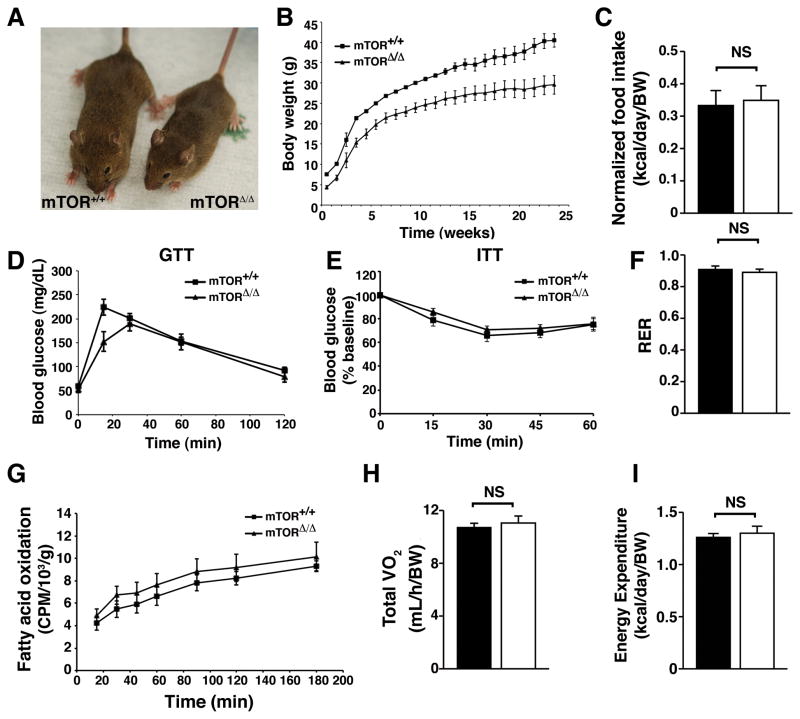Figure 2.
The mTORΔ/Δ mice are smaller but have no significant alterations in glucose homeostasis and metabolism. All measurements were performed using male mice. A) Representative size of a wild type and mTORΔ/Δ adult mouse. B) Body weight of wild type and mTORΔ/Δ mice (n=7 WT and n=7 mTORΔ/Δ, curves are statistically different using a one-way Anova followed by two tailed t-test, p<0.01). C) Daily food intake is indistinguishable between wild type (shaded bar) and mTORΔ/Δ mice (open bar) (n=7 WT and n=6 mTORΔ/Δ, food intake is normalized to body weight). D) Glucose tolerance of 8–12 week old wild type and mTORΔ/Δ mice (n=7 WT and n=6 mTORΔ/Δ). E) Insulin tolerance test of 8–12 week old wild type and mTORΔ/Δ mice (n=12 WT and n=7 mTORΔ/Δ). F) Respiratory exchange ratio (RER) of WT (n=7) and mTORΔ/Δ (n=5). G) Measurement of rates of total body fatty acid oxidation normalized to body weight in WT (n=7) and mTORΔ/Δ mice (n=5). H) Total oxygen consumption normalized to body weight (n=7 WT and n=5 mTORΔ/Δ). I) Total daily energy expenditure is not altered in mTORΔ/Δ mice (n=7 WT and n=5 mTORΔ/Δ). For all panels, shaded bars represent the wild type mice and the open bars represent the mTORΔ/Δ mice. Where indicated, metabolic parameters are adjusted to body weight raised to the 0.75 power as indicated by the symbol (BW). All pooled data is presented as mean ± SEM.

